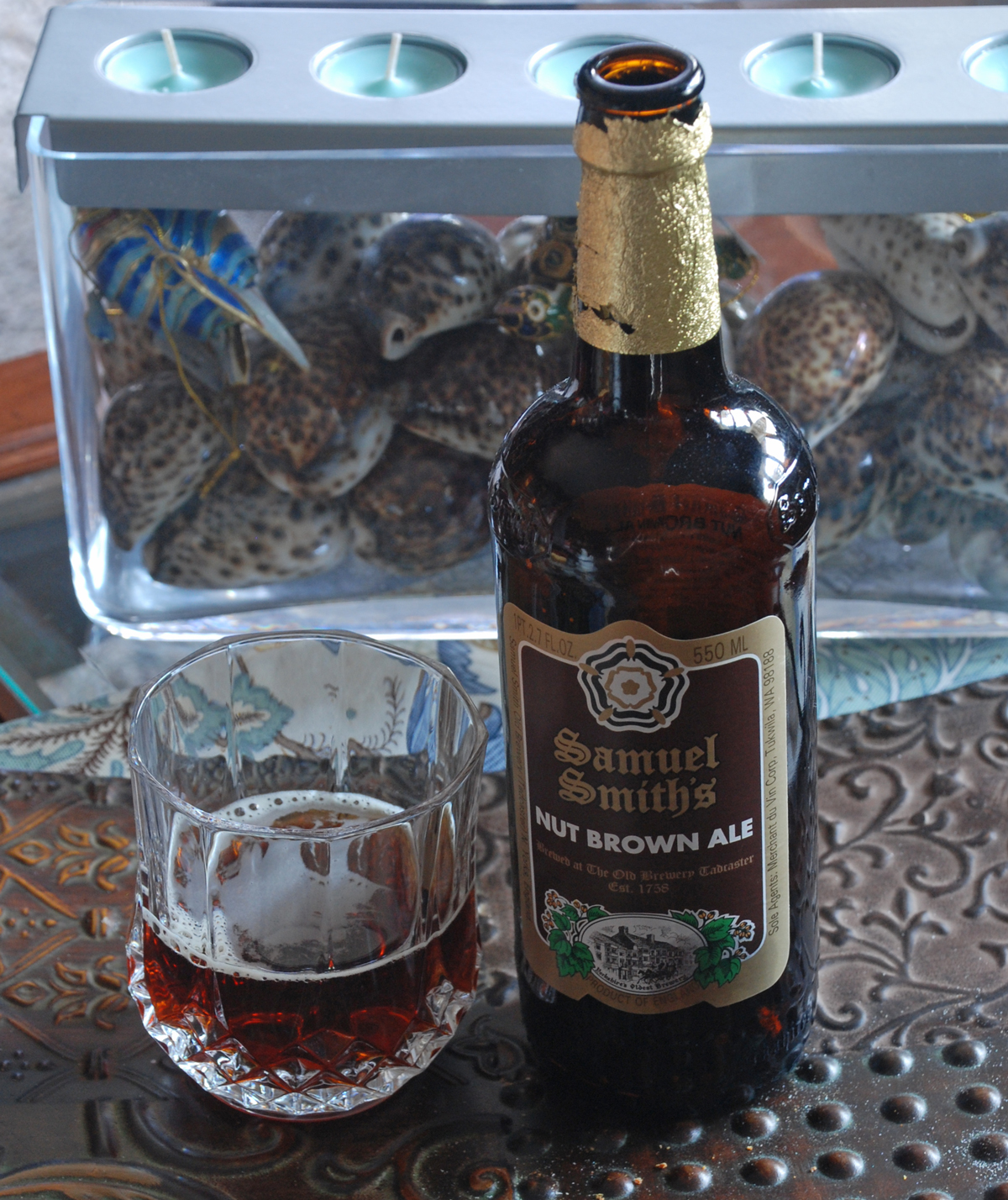 I think the name of this bread is probably the longest one I've ever used or seen for that matter! There are just too many things thrown in this latest bake to make it any shorter and do the bread justice.
I think the name of this bread is probably the longest one I've ever used or seen for that matter! There are just too many things thrown in this latest bake to make it any shorter and do the bread justice.
Recently I made a durum yeast water/sour dough combo bread using separate starters for the yeast water part and for the sour dough part. I was urged by a few of my baking friends, DA and Janet to try making 1 starter using my AP sourdough seed along with the Yeast Water instead of water, plus the flour.
I also wanted to use some of the fresh roasted pumpkin seeds I picked up at the market the other day along with trying some millet flour I also purchased at the same time. Oh, and I forgot I also picked up a bottle of Nut Brown Ale and I had roasted some sweet potatoes so in they went into the cauldron.

I built the starter over 2 builds using French Style flour and Dark Rye flour which I thought would make this a nice hearty and deep flavored bread once the ale and other ingredients were added.
The dough ended up very wet which contributed to the nice moist crumb along with the addition of the sweet potatoes. You can really taste the dark brown ale in this one and overall I was very happy with the outcome.
I used a basket I picked up recently which gave the dough a very fancy pattern. It was almost too nice to score the bread but I forced myself to wield the knife never the less.
If you decide you want to make this and don't have any Yeast Water brewing, just use water instead when building your sour dough levain.

Procedure
Yeast Water-Sour Dough Starter Build 1
50 grams AP Starter at 65% Hydration
100 grams French Style Flour (KAF) (note: you can substitute Bread Flour or AP Flour if necessary)
50 grams Yeast Water Starter
50 grams Water
Mix the flour, water and Yeast Water in a bowl until thoroughly combined. Cover the bowl and let it sit at room temperature for around 6-10 hours. The starter should almost double when ready to proceed to build 2.
Build 2
Add ingredients below to starter from above and mix until incorporated. Cover with plastic wrap and let sit at room temperature for 6-10 hours. You can then use it immediately or refrigerate for a day until ready to mix the final dough.
50 grams French Style Flour
80 grams Dark Rye Flour
160 grams Yeast Water
Main Dough Ingredients
395 grams Starter from Above
180 grams French Style Flour (KAF) (You can use AP Flour or Bread Flour to substitute)
150 grams Millet Flour (Bob's Red Mill)
150 grams Dark Rye (also known as Pumpernickel)
60 grams Rye Chops
60 grams Malted Wheat Flakes
270 grams Sweet Potatoes (Roasted and mashed with a fork)
60 grams Roasted Pumpkin Seeds
16 grams Seas Salt or Table Salt
20 grams Olive Oil
375 grams Water (80-90 degrees F.)
Procedure
Build your Yeast Water levain-Sourdough combo starter the day before you are ready to bake.
On baking day, mix the flours, rye chops, malted wheat flakes and the Ale (make sure the Ale is at room temperature). Mix on low-speed in your stand mixer or by hand for about 1 minute until the ingredients are combined. Let the dough autolyse for about 20 minutes to an hour.
Next add the levain, sweet potatoes, oil and the salt and mix for 3 minutes on low. After 3 minutes add the pumpkin seeds and mix for about 1 minute until incorporated. The dough will barely come together and be almost soupy. Place the dough in a slightly oiled bowl and do a couple of stretch and folds. Cover the bowl and let it rest for 10-15 minutes. Do another stretch and fold in the bowl and let it rest another 10-15 minutes. Do another stretch and fold and let the dough sit out in the covered bowl for another 1.5 hours (You may need to do a few more S & Fs to build enough gluten development). Place the dough in the refrigerator until ready to bake the next day.
When ready to bake take the dough out and leave it covered in your bowl for 1.5 to 2 hours. Next either make one large boule or divide the dough into 2 loaves and either place in a banneton or from into batards and let them rest in floured couches for 1.5 - 2 hours.


About one hour before ready to bake, set your oven for 500 degrees F.and make sure you prepare it for steam. I have a baking stone on the top shelf and the bottom and use a heavy-duty rimmed baking pan that I pour 1 cup of boiling water into right as I put the loaves into the oven.
Score the loaves as desired.

When ready to bake place the loaves into your oven on your oven stone with steam and lower the temperature immediately to 450 degrees. It should take around 30 minutes to bake until the breads are golden brown and reached an internal temperature of 200 - 205 degrees F.
Let the loaves cool down for at least 2 hours or so before eating as desired.

- So how many cats are in this house?
